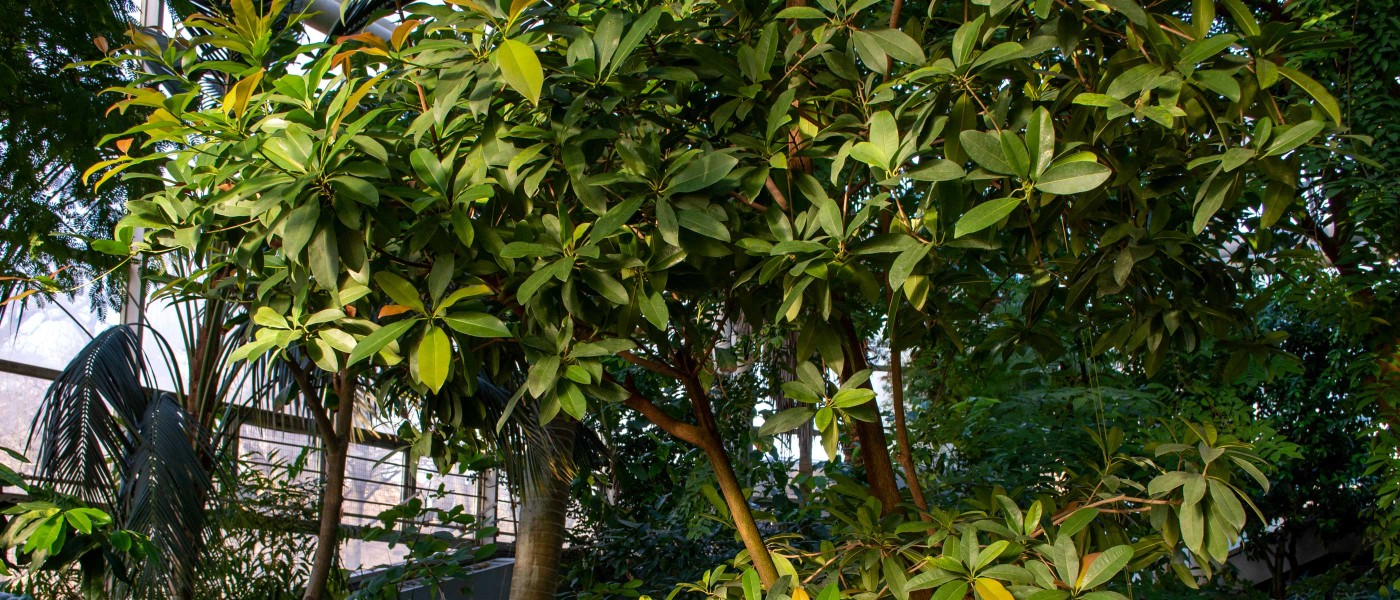Trees of Little Caribbean: A Reading List
This past spring, we opened Trees of Little Caribbean, an exhibition that highlights trees (and treelike plants) cherished by Caribbean people.
The exhibition celebrates these plants’ significance in Caribbean foods, culture, medicine, and beyond, and examines how European colonizers forcibly brought people, and plants, across the globe beginning in the 15th century.
Despite this brutal history, Caribbean people have embraced the fruits, spices, and medicines from these trees. Today, they are an essential part of Caribbean lives, memories, and stories.
While researching and writing the exhibition signage, cocurator Chelsea Forgenie and I sifted through books, articles, and other source materials. Oral history, passed down through generations, was also essential to the exhibit’s development. We listened to interviews, spoke with staff from our partners at I AM CaribBEING, and sat down with our own family members to learn what has not been recorded in books.
The trees in this exhibit are just a few of many plants that grow in Caribbean countries and territories, each of which has its own unique plant names and ways of using them. While the exhibition shares our favorite stories, it simply could not encompass the vast knowledge Caribbean people hold about plants.
Below, we’ve put together a list of five books and texts for those who are interested in learning more. Some of them directly shaped the exhibition, while others offer further explorations of Caribbean plants, cuisine, and histories.
I hope you’re as inspired by these stories as we were. Thanks for reading along!
Tropical Fruit by Desmond Tate
This was the first book that came to mind when I was tasked with researching and writing this exhibit. As a child, my parents flipped through this book with me while sharing their memories and longing for the delicious tropical fruits that reminded them of home.
Tropical Fruit transported us to the Caribbean, and connected me with my Guyanese heritage while I was living thousands of miles away in New York. In this book, Tate examines 40 tropical fruits from around the world (some that grow at Brooklyn Botanic Garden), along with recipes, histories, botanical information, and beautiful illustrations.
Provisions: The Roots of Caribbean Cooking by Michelle and Suzanne Rousseau
“The story of Caribbean food cannot be told without telling the story of Caribbean women,” this cookbook begins. Before diving into delicious vegetarian recipes, the authors’ introduction explores Afro-Caribbean history as it relates to food. The stories they shared helped inform our exhibition.
For example, we learned that provision soup (a popular dish in Trinidad made with starchy vegetables like cassava, dasheen, and eddo) originated from provision grounds—small plots of land where enslaved people were forced to grow their own food. Afro-Caribbean people, particularly women, transformed plants that were deemed undesirable and worthless by British colonizers into nourishing, comforting meals that have persisted through centuries.
Some Common Jamaican Trees by the Natural History Society of Jamaica
This book was compiled by volunteer educators from the Natural History Society of Jamaica, with the aim of teaching children about Jamaica’s natural heritage. While it was created for children ages 8 to 14, people of all ages can use it to learn about botany, history, and folklore, alongside simple illustrations of important Caribbean trees (and not just ones that make edible fruits).
Coolie Woman: The Odyssey of Indenture by Gaiutra Bahadur
Trees of Little Caribbean addresses the question: “How did plants from around the world arrive in the Caribbean?” Along with plants, people were also forcibly taken, tricked, or manipulated into coming to the West Indies.
This book dives into Indo-Caribbean history through the author’s attempts to trace her great-grandmother’s complicated voyage within the Indian indenture system. As an Indo-Guyanese person I am fascinated by this book, which seems to be one of few that covers Indo-Caribbean women from both historical and personal perspectives.
My Garden (Book) by Jamaica Kincaid
Jamaica Kincaid is an Antiguan-American author and gardener. This memoir is not about Caribbean trees per se, but was an inspiration to both Chelsea and me while developing the exhibit. “The garden for me is an exercise in memory,” Kincaid writes.
While exploring her love for gardening and plants, as well as her intense dislikes, Kincaid instructs that “the world cannot be left out of the garden.” Gardens, and the names of the plants that fill them, were shaped by conquest. She also considers the idea of gardens in Antigua, where the distinction between wild and cultivated is not always clear.
For a taste of her writing, you can check out her short 2020 essay for The New Yorker, “The Disturbances of the Garden.”


